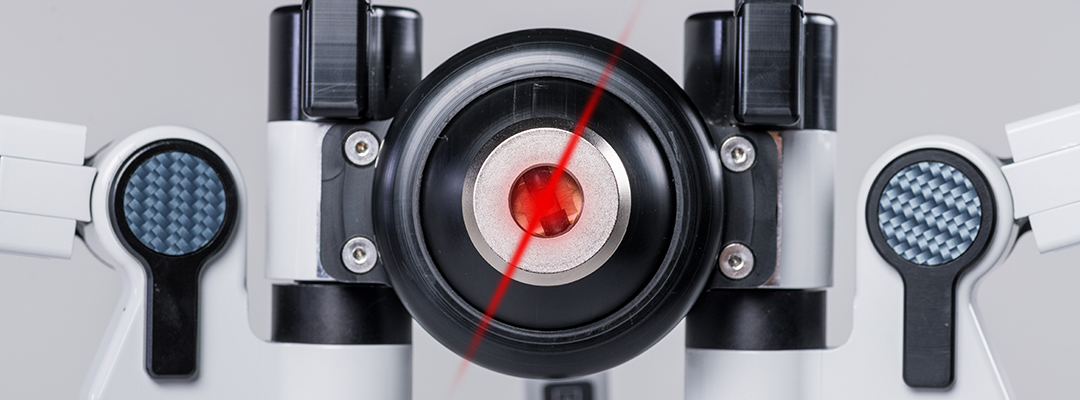
6-Minute Read
Low level light therapy (LLLT), renowned for its non-invasive approach and potential therapeutic benefits, has garnered substantial popularity as a treatment option for a diverse array of conditions.
However, as the use of LLLT continues to increase, it is paramount to prioritize laser safety and minimize potential risks and side effects associated with this form of therapy. Laser safety guidelines play a vital role in ensuring the well-being of both practitioners and patients. By implementing the following key laser safety guidelines, healthcare professionals can provide LLLT treatments with confidence and minimize potential risks.
In this article we’ll discuss some best practices when it comes to LLLT safety including how to implement these key tips:
- Use laser devices that meet FDA safety standards and demonstrate effectiveness.
- Reduce laser exposure by employing proper protective gear and adhering to institutional safety protocols.
- Educate yourself and others about laser hazards to reduce risks.
Each of these three essential best practices serves as a foundation, with numerous underlying aspects that are worth exploring. Let’s delve into the fundamentals and explore guidelines that can promote the seamless and secure implementation of this new technology.

Follow FDA Safety Standards
The U.S. Food and Drug Administration (FDA) is responsible for regulating medical devices, including lasers, to ensure their safety and effectiveness. It is important to use laser devices that meet FDA safety standards, as this will help minimize risks and potential side effects such as burns or eye damage. Healthcare professionals should be familiar with FDA regulations and take the necessary steps to ensure that their laser devices meet all safety requirements.
Here are the key fundamentals to be aware of:
- Laser devices must be labeled and registered with the FDA before they can be used for treatment.
- Healthcare providers should receive adequate training on how to safely operate LLLT devices and handle laser hazards.
- Manufacturers are required to provide instructions about the proper use of their laser products, including information about power settings, exposure times, and safety protocols.
- During treatment, patients should wear protective eyewear designed specifically for laser therapy in order to reduce the risk of eye injuries.
- Doctors must document any adverse reactions or side effects that may occur during or after an LLLT session.
- The FDA recommends that treatments are administered by a trained professional who is familiar with the potential risks associated with LLLT.
- Medical practitioners should be aware of all applicable safety standards and regulations related to LLLT devices when using them in a clinical setting.
Practitioners and medical offices utilizing LLLT must prioritize and strictly adhere to standard FDA requirements and guidelines. A crucial aspect is minimizing unnecessary laser exposure through the use of suitable protective equipment and adherence to institutional safety protocols. Let’s now explore the topic of laser exposure safety in greater depth.
Related Reading: How Men and Women Store Fat Differently
Prioritize Laser Exposure Safety
LLLT can be effective in treating a wide variety of conditions, however it is important to remember that laser exposure may also carry risks. It is essential for practitioners and patients alike to practice safety procedures and limit unnecessary laser exposure during treatment sessions.
Healthcare professionals should be aware of the potential risks associated with LLLT including:
- Burns
- Eye damage
- Skin irritation or discoloration
- Tissue damage from excessive heat build-up
- Damage to internal organs due to prolonged exposure
To minimize potential side effects, healthcare providers should consistently wear protective eyewear during treatments and strictly adhere to institutional safety protocols when operating laser devices. Patients should also be provided with appropriate eye protection during any LLLT session.
Related: Cold Laser Therapy for Neck & Shoulder Pain
Moreover, ensuring adequate airflow in the treatment area is essential to avoid excessive accumulation of heat and reduce the potential for tissue harm.
Practitioners should prioritize educating themselves and others about laser safety guidelines and remain updated on any changes or new regulations concerning LLLT. Acquiring knowledge about laser hazards is vital for mitigating risks and staying well-informed. This proactive approach ensures practitioners are well-prepared to handle laser-related challenges effectively.
Promote LLLT Safety in Your Medical Office
Ensuring the safety of your patients and promoting awareness about laser hazards is essential in a medical office utilizing LLLT.
Here are valuable strategies to educate patients and the public on LLLT safety:
- Provide comprehensive information to patients: When discussing LLLT with patients, focus on highlighting the benefits and minimal side effects of this treatment when used correctly. Stress the importance of adhering to safety protocols to minimize risks.
- Utilize a combination of communication methods: To reach a wider audience, employ both traditional and digital communication channels. Consider using television and print media to disseminate information about LLLT safety. Additionally, develop informative websites that educate patients on the subject. Conducting seminars and workshops can also be effective in raising awareness. Emphasize the significance of following safety protocols during these communication efforts.
- Refer to reputable educational materials and campaigns: Take advantage of established guidelines, resources, and sample videos provided by reputable organizations like the American Society for Laser Medicine and Surgery (ASLMS), the Laser Institute of America (LIA), and the American Society of Lasers in Medicine and Surgery (ASLMS). These resources can serve as valuable tools to educate patients and the public about LLLT safety.
- Tailor educational materials and campaigns: Adapt your educational materials and campaigns to suit specific areas of expertise within your medical office. By tailoring the information to the patient’s condition or treatment, you can enhance their understanding and engagement. This personalized approach can contribute to a safer LLLT experience.
Related Reading: How to Market Laser Therapy
Foster a Foundation of Knowledge and Safety

Through the implementation of these strategies, organizations can proactively promote the safety of Low-Level Laser Therapy (LLLT) and enhance awareness among patients and the general public regarding its advantages and precautions. By fostering a solid foundation of knowledge and emphasizing strict adherence to safety protocols, organizations can cultivate an environment that prioritizes safety and maximizes the effectiveness of LLLT practices, resulting in a more secure and successful implementation of this therapeutic approach.
With a strong foundation of knowledge and a commitment to safety, LLLT can be effectively and securely integrated into medical practices, providing patients with a safer therapeutic experience.
Not All Light is the Same [Free eBook Download]
Discover the benefits of Low-Level Laser Therapy (3LT®) by Erchonia, a world leader in the field of 3LT® technology. Learn how 3LT® can help reduce the need for prescription opioids for chronic low back pain, the science behind 3LT® and the difference between visible lasers and infrared lasers.
Related: Comparing Cost of LLLT to other Treatments



